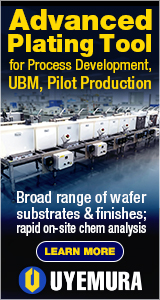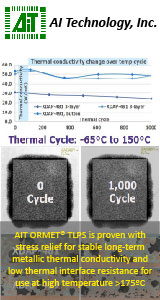|

|
|
| Ask the Experts | |||||||
|
|||||||
|
July 28, 2008 - Updated July 27, 2008 - Originally Posted Procedure for handling moisture sensitive PCB'sIPC-JEDEC J-STD 0020B provides guidance concerning handling and packaging of moisture sensitive devices. PCBs are also moisture sensitive devices. What MSD Level is commonly used for multi layer PCBs? M.G. |
|||||||
| Expert Panel Responses | |||||||
|
With the introduction of lead free, the risks associated with marginal or improper handling of MSDs has increased dramatically. Higher reflow temperatures drive up the saturated vapor pressure to double or even triple that present in tin lead reflow processes. The higher temperature increases the water pressure inside the components, and as a result, the allowable moisture content and associated floor life have to be reduced. All moisture-sensitive components have to be requalified by their manufacturers for lead-free and they are typically downgraded by at least one and generally two levels of sensitivity. This significantly affects how components must be are handled, processed and stored. Suddenly, manufacturers that are currently handling MSL 2 or MSL 3 components are now looking at processing MSL 5 or MSL 6. The SMTA's MSD Council is among the those who have reported that even passive components (ceramic chip resistors and capacitors), normally classified as MSL 1 (unlimited floor life) have shown field failures after lead free reflow due to presence of moisture in the component. Another major impact of lead free reflow for assemblers is the handling and storage of PWBs, as the incidence of delamination has increased with the change in thermal processing. PWBs need to be treated as MSL classification 4, in other words processed within 72 hours of open shop floor time. See http://www.superdry.info/
Director Protean Marketing Now a director at Protean Marketing, Mr. Heimsch has worked in the electronics industry 25+ years in a wide variety of international sales, marketing and operations roles. Rich spearheads Protean's international business development, specializing in Brand Management and Strategic Communications.
IPC task group D-35 is developing a guide for storage and handling of bare boards. This group has recently expanded the scope of the project to include test methods for classifying MSL of bare boards. IPC, ECA and JEDEC are preparing to publlish J-STD-075 that will provide moisture and thermal classification methods for passives, connectors, switches--anything else that might go through a wave or reflow oven (except PCBs). J075 is projected to be released by the end of August. BTW, J-STD-033 is the correct standard for handling & packaging MSDs.
Director - Certification & Assembly Technology IPC Mr. Crawford is Director of Certification and Assembly Technology for IPC. He is technical liaison to the IPC committees that maintain critical industry standards and has presented numerous papers internationally.
Reader Comment
The SMTA's MSD Council is among the those who have reported that even passive components (ceramic chip resistors and capacitors), normally classified as MSL 1 (unlimited floor life) have shown field failures after lead free reflow due to presence of moisture in the component.
This has used as unlimited shelf-life for chip resistors and caps. It's known as no shelf life so many suppliers/users are confused & using up to 10 year old components which has major solderability issue.
Mukesh Sharma, Autometer Alliance Ltd, India
|
|||||||
| Submit A Comment | |||||||
|
Comments are reviewed prior to posting. You must include your full name to have your comments posted. We will not post your email address. |
|
Free Newsletter Subscription
Circuitnet is built for professionals who bear the responsibility of looking ahead, imagining the future, and preparing for it. Insert Your Email Address |
|

|




